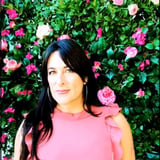Summary
In this talk, the inclusive design Ops program manager starts by addressing the varied definitions of inclusion and encourages embracing them all as valid. She links inclusion closely with inclusive design, which centers accessibility but also extends to considering exclusion based on race, culture, gender, trauma, and more. Highlighting partnership opportunities with HR and others, she urges finding commonality rather than division in how inclusion is defined. She previews upcoming talks by Laura on accessibility, Pat and Alexandra on global Design Ops, Monsey on feminist perspectives, and Jess on neurodiversity, positioning these as lenses to deepen the conversation. She connects inclusion intentionally to the conference theme of building Design Ops clarity, asserting that inclusion guides prioritization and decision-making. The talk closes with a framework—head (logical understanding), heart (empathy and vulnerability), and hands (action)—to prepare the audience for engaging with sometimes uncomfortable but necessary conversations and to inspire concrete next steps. Overall, she calls on Design Ops professionals to leverage their skills to lead inclusion initiatives.
Key Insights
-
•
Inclusion in Design Ops encompasses a broad spectrum including disability, race, culture, gender, and trauma.
-
•
Inclusive design focuses on the process and asks who might be excluded at every stage.
-
•
Different departments such as HR use different inclusion definitions, which can be harmonized through partnership.
-
•
Finding overlaps in inclusion definitions builds stronger relationships and collaborative efforts.
-
•
Intentional inclusion leads to clarity in Design Ops priorities and decision-making.
-
•
Design Ops professionals have the skills and opportunity to lead inclusion initiatives.
-
•
Upcoming talks will explore inclusion through accessibility, global perspectives, feminism, and neurodiversity lenses.
-
•
Inclusion conversations may cause discomfort due to their novelty in design contexts.
-
•
The head, heart, and hands framework prepares teams to engage intellectually, emotionally, and practically with inclusion.
-
•
Inclusion efforts help teams learn how and when to say yes or no by understanding what's important to people and the world.
Notable Quotes
"There are so many different definitions for what inclusion is and they are all correct."
"When I use the word inclusion, I’m usually using it in conjunction with the term inclusive design."
"The guiding question I’ve adopted is who might we be excluding now."
"Look for the commonality in our definition of inclusion rather than the differences."
"Inclusion is an opportunity to build relationships rather than create division."
"When we start being intentional about inclusion, we gain clarity in Design Ops."
"Design Ops professionals have the skills to lead these big initiatives like inclusion."
"Some of these talks might make people feel a little uncomfortable because we haven’t had these conversations before."
"The head is where we are logical and rational and ask why do we need to include inclusion in Design Ops."
"The hands is the part we love — action — to start doing things on your teams right after this Summit."
Or choose a question:















More Videos

"I’ve been using screen readers for 30 years and accessibility has always been a passion of mine."
Sam ProulxSUS: A System Unusable for Twenty Percent of the Population
December 9, 2021

"You don’t want so much governance that people can’t be creative, but you need just enough to help their process."
Michael LandEstablishing Design Operations in Government
February 18, 2021

"VOC wasn’t a replacement for user research, but an enhancer that captured nuggets researchers might miss during discovery."
Shipra KayanHow we Built a VoC (Voice of the Customer) Practice at Upwork from the Ground Up
September 30, 2021

"Innovation is about being fearless, breaking rules, and refusing to stop at the way things have always been done."
Ian SwinsonDesigning and Driving UX Careers
June 8, 2016

"The trusted partnership between the chief of staff and the executive is critically important."
Isaac HeyveldExpand DesignOps Leadership as a Chief of Staff
September 8, 2022

"Stepping into the shoes of design gave stakeholders a new admiration for the design process and strengthened our relationship."
Amy EvansHow to Create Change
September 25, 2024

"We’re powering a 300 plus organization of designers, researchers, program managers, and strategists."
Kate Koch Prateek KalliFlex Your Super Powers: When a Design Ops Team Scales to Power CX
September 30, 2021

"Beliefs are habits of action; they are the rules that guide how we decide to act."
Dave GrayLiminal Thinking: Sense-making for systems in large organizations
May 14, 2015

"Providing immediate tactical value is the big one for just-in-time curation."
Matt DuignanAtomizing Research: Trend or Trap
March 30, 2020
Latest Books All books
Dig deeper with the Rosenbot
What are effective strategies for designers to introduce systems thinking in organizations resistant to broad perspectives?
How can small government design teams leverage knowledge management to drive capacity building across diverse agencies?
What are successful strategies to overcome resistance to UX research within product teams?
















